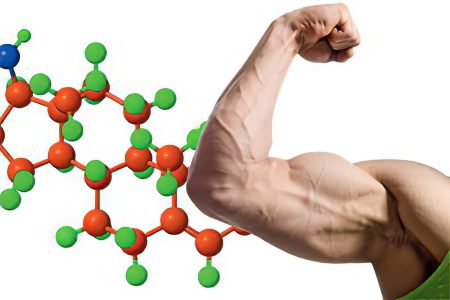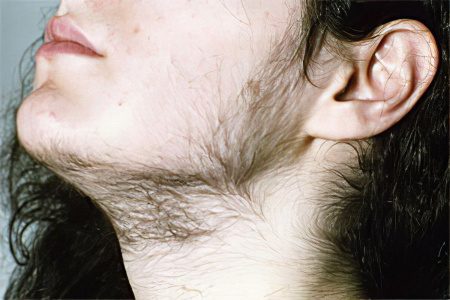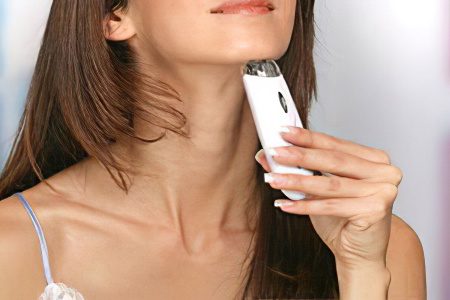Contents

Hirsutism is an excess of facial hair in women. Such a diagnosis can only be made to female patients. This disorder develops due to an excess of male sex hormones in their body. Although many ladies believe that the cause of excess facial hair is plucking. This opinion is incorrect.
Women suffer from the fact that hair grows on their face, as this negatively affects their appearance and causes aesthetic discomfort. Hair is located above the upper lip, on the chin, on the chest, on the abdomen and on the back. They are hard, with a rod, long and dark. Vellus hair comes from different follicles, so they have a different structure. Facial hair grows in every 20 women at a young age. During menopause, every 4 ladies face this problem. Hirsutism is often associated with infertility, menstrual irregularities, and depression.
Male sex hormones as the cause of hirsutism

Androgens are male sex hormones that lead to hirsutism. The main androgen is testosterone. In men, he takes an active part in the formation of sperm, and is also responsible for the main male characteristics: for a rough voice, the appearance of body hair, etc.
In a woman’s body, testosterone is also normally available, but there is very little of it. This hormone to some extent affects the menstrual cycle, sex drive, and fertility. If there is too much testosterone in a woman’s body, then this leads to the appearance of male characteristics in her.
Other male hormones include androstenedione and dehydroepiandrosterone. They undergo certain changes, after which they become testosterone.
Symptoms of hirsutism

Signs of hirsutism include:
A woman has hair on her face, on the areola of the nipples, on her stomach, back, buttocks and on the inner surface of the thighs, which have a rigid structure and a dark color.
The hair becomes greasy, after which it begins to fall out. This is especially noticeable on the forehead.
An acne rash appears on the skin.
Menstruation becomes irregular or absent altogether.
The woman suffers from infertility.
If the disease progresses, and the level of male sex hormones continues to increase, then this is expressed by symptoms such as:
Libido is enhanced.
Muscle mass begins to arrive. This is especially noticeable in the upper half of the body.
Fat accumulates to a greater extent in the area of the shoulder girdle and on the chest. The figure begins to resemble a man’s.
The voice becomes rough.
The temples are going bald.
The clitoris increases in size, and the labia, on the contrary, decreases. Vaginal lubrication stops being produced.
Causes of hirsutism

Thin fluffy hair that covers the body and face of a woman begins to degenerate into terminal hair. They become harder, longer and darker. This is due to the fact that certain pathologies develop in the body of a woman. It has been established that more than 90% of all cases of hirsutism are the result of polycystic ovary syndrome. Hormonal imbalance can happen during pregnancy or during menopause.
Excessive production of male sex hormones in the female body occurs for the following reasons:
Polycystic ovary syndrome with disruption of the reproductive system as a whole. At the same time, cystic cavities filled with fluid form on the ovaries themselves.
Cancers of the ovaries.
Hyperthecosis of the ovaries.
Chronic anovulation.
Secondary hypothalamic amenorrhea.
Climax.
Sometimes hair on a woman’s face appears due to increased sensitivity to male sex hormones. At the same time, there are no changes in the hormonal background, but the body reacts too strongly to the usual level of androgens.
Other causes of hirsutism include:
Violations in the work of the adrenal glands. This happens due to hypoplasia of their cortex, against the background of the growth of a tumor of the adrenal glands. At the same time, the production of steroid hormones increases in the body (androgens also belong to this group).
Disorders in the work of the pituitary gland. This occurs with Itsenko-Cushing syndrome, with acromegaly, against the background of the growth of a hormonal tumor (pituitary prolactinoma). Diseases of the pituitary gland negatively affect the work of the adrenal glands, which begin to produce too many male sex hormones.
Genetic predisposition. Some women have a family history of hirsutism. This is especially often observed in residents of the Caucasus and the Mediterranean.
Treatment with certain drugs: corticosteroids (Betamethasone, Hydrocortisone), androgens (Proviron, Andriol), progestins (Micronor), immunosuppressants (Cyclosporin, Sandimmun), antibiotics (Streptomycin), anabolics (Nolvadex, Clomid).
Hirsutism, the causes of which cannot be established, is called idiopathic. The symptoms of such a violation are mild, the hormonal background is practically normal, the function of procreation is preserved.
Classification of hirsutism

Depending on the cause that provoked excessive hair growth, hirsutism is distinguished:
Dermatological (constitutional). It can be idiopathic or familial.
Neuroendocrine, which are subdivided into ovarian, adrenal and pituitary.
Iatrogenic (exogenous), which is due to the intake of drugs.
Depending on the violations that accompany hirsutism, the following subspecies are distinguished:
No associated violations.
With piloseborrheic symptoms in which the patient develops acne and acne.
With ovulation disorders.
The woman begins to look like a man.
Diagnosis of hirsutism
When hair appears on the face, it is necessary to contact a gynecologist and an endocrinologist. The doctor will prescribe the necessary examinations for the woman.
Features of the hormonal background in women with hirsutism (according to laboratory diagnostics)
Features of the development of the disease | If the symptoms increase gradually, then polycystic ovaries can be suspected, which develops against the background of tumors that produce hormones. | If the level of testosterone is less than 200 ng in% and decreases when taking oral contraceptives or Prednisolone, then this indicates polycystic disease. If the level of testosterone is above 200 ng in%, then this indicates a neoplasm of the ovaries. |
Taking medications. | A woman is being treated with drugs that can cause side effects in the form of hirsutism. | The level of DHEA sulfate less than 700 ng in% indicates adrenal hyperplasia (if it continues to decrease while taking Dexamethasone). If the level of DHEA sulfate is below 700 ng% and does not decrease, then this indicates tumor neoplasms of the adrenal glands. |
Features of the menstrual cycle. | If the cycle is regular, then familial or idiopathic hirsutism may be suspected. |
|
In addition to passing laboratory tests, a woman will be prescribed such diagnostic procedures as:
Ultrasound of the adrenal glands and ovaries.
MRI and CT of the adrenal glands and brain.
Laparoscopy of the ovaries is performed for diagnostic purposes in the case when the doctor suspects tumor neoplasms of the organs.
Treatment of hirsutism

If hirsutism has mild symptoms, and the menstrual cycle is not disturbed, then therapy is not carried out.
Since hirsutism is not an independent pathology, but only a symptom of a certain disorder in the body, it is necessary to direct efforts to eliminate it.
If a pituitary, adrenal or ovarian tumor is detected, the patient is referred for surgery. If excessive facial hair growth is due to medication, then therapy should be reviewed. Drug correction is carried out with Itsenko-Cushing’s syndrome, acromegaly and other diseases that do not require the help of a surgeon.
Taking medicines
Hormone therapy is prescribed for women with diseases such as:
Hyperandrogenism. Women are shown taking drugs that reduce the level of testosterone in the body (Diana-35, Zhanin, Yarina).
Congenital adrenal hyperplasia (Prednisolone, Cortisone).
Polycystic ovaries. A woman is shown taking oral contraceptives (Zhanin, Yarina, Androkur) and antiestrogen (Clomiphene).
Tumors require chemotherapy and surgery.
Hormonal drugs are prescribed to patients only after a comprehensive examination. These drugs prevent the growth of hair on the face and body, but they do not affect the hair that has already appeared. Before starting therapy, you must make sure that there are no contraindications. These include pregnancy and breastfeeding, cancerous tumors. You also need to remember about individual intolerance to drugs.
Psychological help and diet
If a woman is overweight, then she will need to follow a diet. In the diet, reduce the number of dishes that contain fast carbohydrates.
When a patient develops neurosis or depression, she needs the help of a psychologist.
Cosmetic solution to the problem

You can remove hair in unwanted places with the help of cosmetic procedures. They allow you to solve the problem of an aesthetic plan, but they do not affect the underlying disease. Therefore, you should not refuse hormone therapy if the doctor insists on it.
Low Cost Cosmetic Treatment Options:
Hair lightening. To do this, you can use preparations containing hydroperite or hydrogen peroxide. They will lighten the pigment contained in the hair, making it less visible. This method is suitable for women whose symptoms of hirsutism are not pronounced.
Plucking hair. For the procedure, you can use tweezers. After treating the problem area, you need to disinfect it with antiseptic agents. This method is available when there is little facial hair. However, the more often a woman removes them in this way, the rougher her skin will become. The new hair will keep getting longer. In addition, the likelihood of infection of the dermis increases.
Epilation and shaving. These methods are suitable for removing hair from the trunk and limbs.
Cosmetic procedures with a high cost:
Photoepilation. The hair follicles are affected by a light wave. This leads to the destruction of the hair follicle. The procedure gives a good effect on dark hair. It keeps for 5 months.
Laser epilation. The laser beam destroys the hair follicle and the hair stops growing. The laser has no effect on dormant bulbs. Therefore, several procedures are required. A full course can last from 1 month to six months.
Both photoepilation and laser hair removal have a number of contraindications. It is forbidden to carry out procedures for pregnant women, patients receiving steroid drugs or Isotretinoin, patients with porphyria. Do not treat areas of skin with tattoos. The procedure should be abandoned for women who have recently vacationed at sea or visited a solarium (their skin will be weakened by the action of ultraviolet rays). Also a contraindication is the presence of damage in the treatment area.
Prognosis for hirsutism
Each hair lives for about six months. Getting rid of them takes time and effort. Sometimes it is not possible to completely cope with the problem. However, it is still possible to slow down hair growth.









